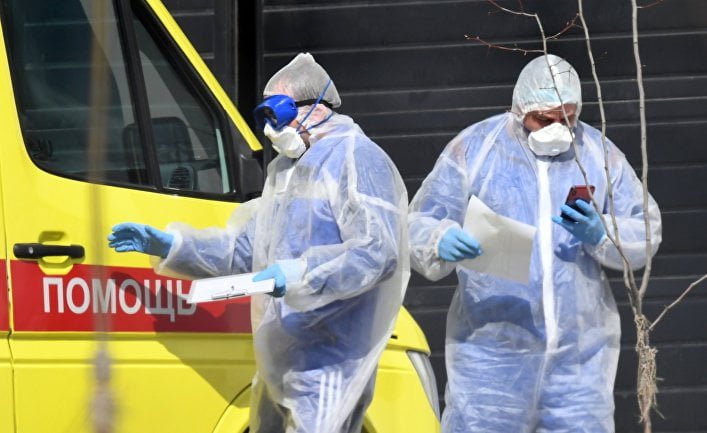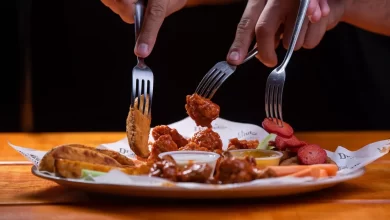
How the COVID-19 pandemic could end
US, WASHINGTON (ORDO NEWS) — We know how the COVID-19 pandemic began: bats in the vicinity of Chinese Wuhan have a mixture of coronavirus strains, and sometime last fall, one of the strains took the chance and crossed interspecific borders. He left his master (or owners) and moved into the human body. After that, the virus started in all its seriousness.
However, no one knows how this pandemic will end. We have not yet encountered such a coronavirus. It is unprecedented because it is easily transmitted; he has many symptoms, from the most inconspicuous and harmless to the deadly; and he disorganized the whole world. The population was very vulnerable, and the incidence began to grow exponentially. “This is a special and completely new situation,” said Sarah Cobey, an epidemiologist and evolutionary biologist at the University of Chicago.
But past pandemics give us clues about what to expect in the future. There is no example in history that we could follow, but over the past 100 years, humanity has experienced several major epidemics, which eventually ended and stopped destroying society. How they stopped can be a guide to action for today’s world, which is looking for ways to restore public health and return to normal life. According to Kobe and other experts, there are three important points that indicate the following: what happens next depends on the evolution of the pathogen and how a person will respond to it in a biological and social sense.
Problem spread
Viruses constantly mutate. Those that cause a pandemic are quite new and unusual, and therefore the human immune system does not immediately recognize dangerous interventions in them. They force the body to create a completely new defense with the participation of new antibodies and other components of the immune system that are able to respond to the enemy and attack him.
A large number of people get sick in a short time, and social factors such as congestion and lack of drugs can further increase the incidence. Ultimately, in most cases, antibodies produced by the immune system to combat the invader appear in a large number of people, and they gain long-term immunity, and the transmission of the virus from person to person becomes limited. But this can take several years, and before that chaos will rule.
Learn to live with the disease.
The most famous example of this development in modern history is the epidemic of the Spanish H1N1 flu in 1918-1919. At that time, doctors and health workers had much less means of control than today, and the effectiveness of administrative measures, such as closing schools, depended on how timely and decisively they were used. In two years of the pandemic, which was triggered by three waves, 500 million people were infected, and from 50 to 100 million died. It ended naturally when those who had been ill and recovered received immunity.
Strain H1N1 has become an endemic infectious disease that is constantly present among us, affecting humanity less severely. For 40 years, this strain has circulated as a seasonal virus. In 1957, another pandemic occurred, this time involving H2N2, which basically destroyed the 1918 strain. In fact, one flu virus eliminated another, and scientists do not know how this happened. When a man tried to do this, he did not succeed. “Nature can do this, but we can’t,” says virologist Florian Krammer, who works at Mount Sinai School of Medicine in New York.
Containment
The 2003 SARS epidemic (Severe Acute Respiratory Syndrome SARS) was not caused by the influenza virus, but by the SARS-CoV coronavirus, which is a close relative of the culprit of the current SARS-CoV-2 coronavirus pandemic. Of the seven known human coronaviruses, four are widespread and cause up to a third of acute respiratory viral infections of SARS. The one that caused the outbreak of SARS was much more dangerous. Due to active epidemiological actions, such as isolation of patients, quarantine of those in contact and social control measures, acute outbreaks were limited to several foci, such as Hong Kong and Toronto.
Such containment became possible due to the fact that the disease occurred immediately after infection - very quickly and clearly.
Almost all infected with this virus had serious symptoms: fever and shortness of breath. And they transmitted the virus after they got sick, and not before. “Most SARS patients became contagious about a week after the onset of symptoms,” says epidemiologist Benjamin Cowling of Hong Kong University. “If they were identified during this week and isolated, establishing good infection control, then they no longer spread the disease.”
The containment measures were so effective that there were only 8,098 cases of SARS and 774 deaths worldwide.
Vaccine
When the new H1N1 flu virus, known as swine flu, caused a pandemic in 2009, there was alarm because it was a brand new H1N1, very similar to the killer virus from 1918, Cowling says. But swine flu was not as scary as scientists thought. “In part,” says Krammer, “we were lucky because the pathogenicity of the virus was not very high.” But there was another very important reason: six months after the appearance of this virus, scientists created a vaccine to combat it.
Unlike the measles and smallpox vaccine, which provides long-term immunity, the flu vaccine provides protection for only a few years. The influenza virus is very insidious, it quickly mutates to bypass the immune system. As a result, the vaccine has to be improved every year and vaccinated regularly. But during a pandemic, even a short-acting vaccine can be a real boon. The vaccine, launched in 2009, helped contain the second wave of the winter epidemic. As a result, the swine flu virus followed the example of the 1918 virus much faster, becoming an ordinary seasonal flu, from which many today are protected either with vaccinations or antibodies from previous infections.
The final phase of the current pandemic
Forecasts about what will happen with COVID-19 are speculative, but at the final stage a set of measures can be applied that have repeatedly stopped previous pandemics. This preservation of public control measures to gain time, new antiviral drugs to relieve symptoms and a vaccine. The exact formula, say, how long to maintain the rules of social distance, largely depends on the people themselves, on how accurately they will follow restrictive measures, and how effectively the authorities will respond. For example, the containment measures that helped stop COVID-19 in Hong Kong and South Korea in Europe and the United States were taken too late. “The question of how the pandemic will develop is at least 50% dependent on social and political factors,” says Kobe.
And the remaining 50% should be provided by science. Scientists have rallied like never before and are working on many fronts in an attempt to find a cure. If any of the antiviral drugs currently being developed is effective, they will improve the treatment methodology and the number of severe cases and deaths will decrease. The search for antibodies that neutralize SARS-CoV-2 can also be very useful, since they are an indicator of immunity in recovered patients. Krammer and colleagues developed one such search method. There are other methods. Antibody serology used to be used only in local epidemics, and new search methods will not end the pandemic. But they will allow the detection and use of blood with a high content of antibodies to treat seriously ill patients.
To stop the spread of the disease, you need a vaccine. It will take time, most likely a year. But there is reason to believe that the vaccine created will be effective. Unlike the influenza virus, coronavirus has fewer ways of interacting with the host cells. “If this interaction stops, the virus can no longer replicate,” Kramer says. “And that is our advantage.” It is unclear whether the vaccine will give long-term immunity, as with measles, or whether it will be short-term immunity, as with flu shots. “But at the moment, any vaccine will benefit,” says epidemiologist Aubree Gordon of the University of Michigan.
If all eight billion people on our planet who are not sick or have recovered are not vaccinated, then COVID-19 could become endemic. The disease will become seasonal and will affect people from time to time, and sometimes very seriously. But if the virus stays with us long enough, it will begin to infect young children. Usually, their disease is quite easy, but not always, and while in adults who have been ill in childhood, the recurrence of the disease is not very difficult. The combination of vaccine and natural immunity will protect many of us. Coronavirus, like most viruses, will continue to live, but it will not become a disaster on a planetary scale.
—
Online:
Contact us: [email protected]
Our Standards, Terms of Use: Standard Terms And Conditions.









